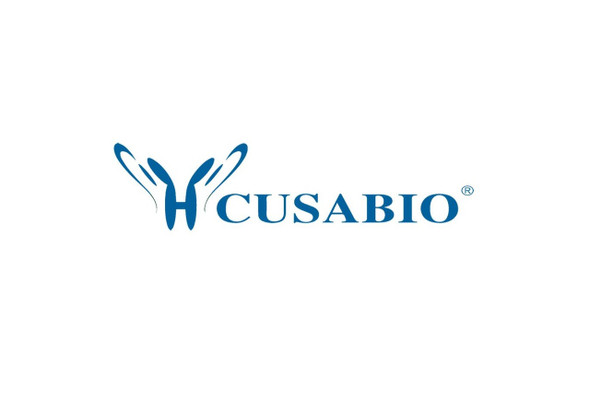Cusabio Human Recombinants
Recombinant Human RING finger protein 11 (RNF11) | CSB-BP019816HU
- SKU:
- CSB-BP019816HU
- Availability:
- 28 - 38 Working Days
Description
Recombinant Human RING finger protein 11 (RNF11) | CSB-BP019816HU | Cusabio
Alternative Name(s): CGI 123; RING finger protein 11; RNF11; RNF11_HUMAN; Sid 1669; SID1669
Gene Names: RNF11
Research Areas: Cell Biology
Organism: Homo sapiens (Human)
AA Sequence: GNCLKSPTSDDISLLHESQSDRASFGEGTEPDQEPPPPYQEQVPVPVYHPTPSQTRLATQLTEEEQIRIAQRIGLIQHLPKGVYDPGRDGSEKKIRECVICMMDFVYGDPIRFLPCMHIYHLDCIDDWLMRSFTCPSCMEPVDAALLSSYETN
Source: Baculovirus
Tag Info: C-terminal 9xHis-tagged
Expression Region: 2-154aa
Sequence Info: Full Length of Mature Protein
MW: 19.3 kDa
Purity: Greater than 85% as determined by SDS-PAGE.
Relevance: Essential component of a ubiquitin-editing protein complex, comprising also TNFAIP3, ITCH and TAX1BP1, that ensures the transient nature of inflammatory signaling pathways. Promotes the association of TNFAIP3 to RIPK1 after TNF stimulation. TNFAIP3 deubiquitinates 'Lys-63' polyubiquitin chains on RIPK1 and catalyzes the formation of 'Lys-48'-polyubiquitin chains. This leads to RIPK1 proteasomal degradation and consequently termination of the TNF- or LPS-mediated activation of NF-kappa-B. Recruits STAMBP to the E3 ubiquitin-ligase SMURF2 for ubiquitination, leading to its degradation by the 26S proteasome.
Reference: "Identification of novel human genes evolutionarily conserved in Caenorhabditis elegans by comparative proteomics." Lai C.-H., Chou C.-Y., Ch'ang L.-Y., Liu C.-S., Lin W.-C. Genome Res. 10:703-713(2000)
Storage: The shelf life is related to many factors, storage state, buffer ingredients, storage temperature and the stability of the protein itself. Generally, the shelf life of liquid form is 6 months at -20?/-80?. The shelf life of lyophilized form is 12 months at -20?/-80?.
Notes: Repeated freezing and thawing is not recommended. Store working aliquots at 4? for up to one week.
Function: Essential component of a ubiquitin-editing protein complex, comprising also TNFAIP3, ITCH and TAX1BP1, that ensures the transient nature of inflammatory signaling pathways. Promotes the association of TNFAIP3 to RIPK1 after TNF stimulation. TNFAIP3 deubiquitinates 'Lys-63' polyubiquitin chains on RIPK1 and catalyzes the formation of 'Lys-48'-polyubiquitin chains. This leads to RIPK1 proteasomal degradation and consequently termination of the TNF- or LPS-mediated activation of NF-kappa-B. Recruits STAMBP to the E3 ubiquitin-ligase SMURF2 for ubiquitination, leading to its degradation by the 26S proteasome.
Involvement in disease:
Subcellular Location: Early endosome, Recycling endosome, Cytoplasm, Nucleus
Protein Families:
Tissue Specificity: Expressed at low levels in the lung, liver, kidney, pancreas, spleen, prostate, thymus, ovary, small intestine, colon, and peripheral blood lymphocytes, and, at intermediate levels, in the testis, heart, brain and placenta. Highest expression in the skeletal muscle. In the brain, expressed at different levels in several regions: high levels in the amygdala, moderate in the hippocampus and thalamus, low in the caudate and extremely low levels in the corpus callosum (at protein level). Restricted to neurons, enriched in somatodendritic compartments and excluded from white matter (at protein level). In substantia nigra, present in cell bodies and processes of dopaminergic and nondopaminergic cells (at protein level). In Parkinson disease, sequestered in Lewy bodies and neurites. Overexpressed in breast cancer cells, but not detected in the surrounding stroma and weakly, if at all, in normal breast epithelial cells (at protein level). Also expressed in several tumor cell lines.
Paythway:
Form: Liquid or Lyophilized powder
Buffer: If the delivery form is liquid, the default storage buffer is Tris/PBS-based buffer, 5%-50% glycerol. If the delivery form is lyophilized powder, the buffer before lyophilization is Tris/PBS-based buffer, 6% Trehalose, pH 8.0.
Reconstitution: We recommend that this vial be briefly centrifuged prior to opening to bring the contents to the bottom. Please reconstitute protein in deionized sterile water to a concentration of 0.1-1.0 mg/mL.We recommend to add 5-50% of glycerol (final concentration) and aliquot for long-term storage at -20?/-80?. Our default final concentration of glycerol is 50%. Customers could use it as reference.
Uniprot ID: Q9Y3C5
HGNC Database Link: HGNC
UniGene Database Link: UniGene
KEGG Database Link: KEGG
STRING Database Link: STRING
OMIM Database Link: OMIM









